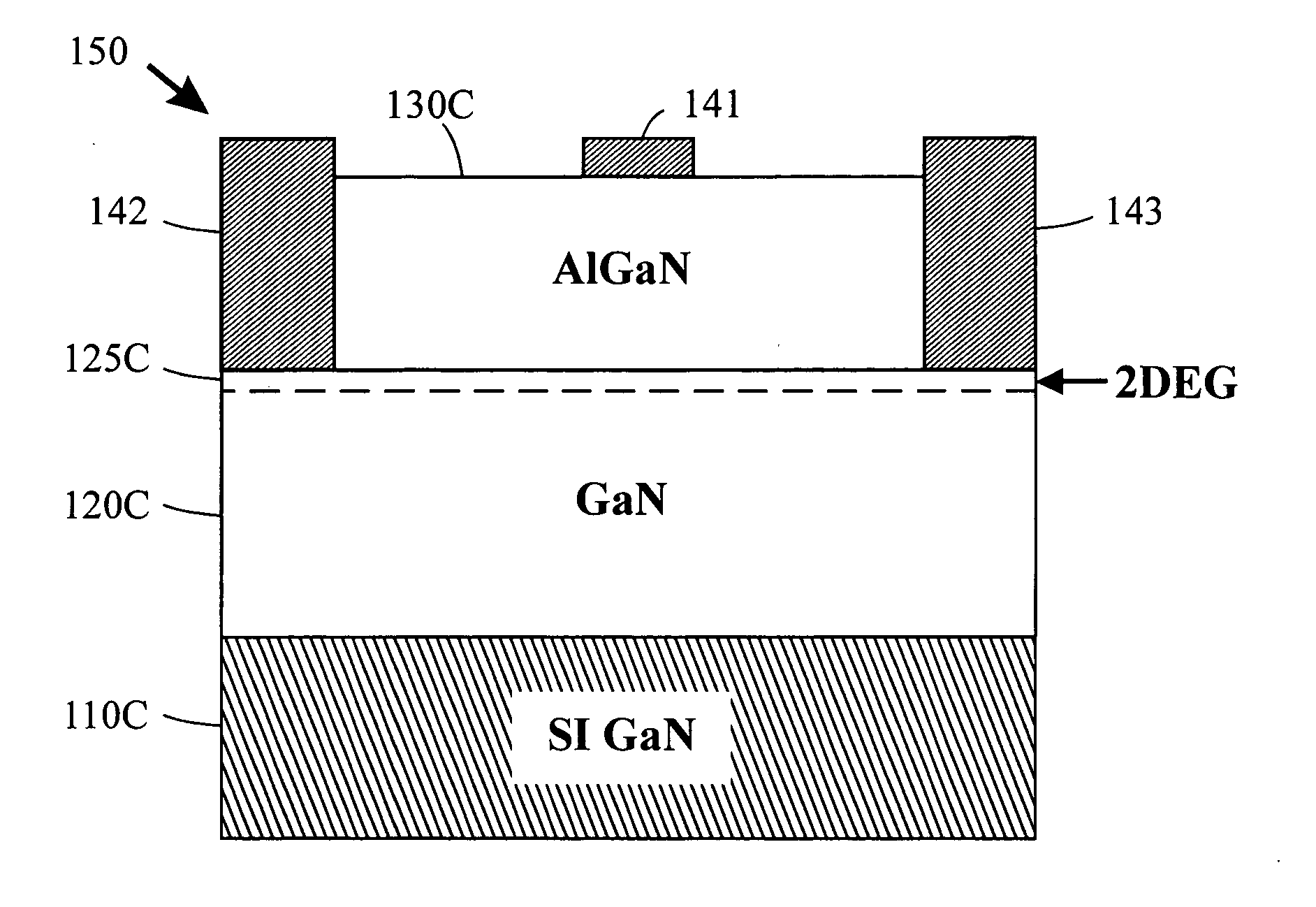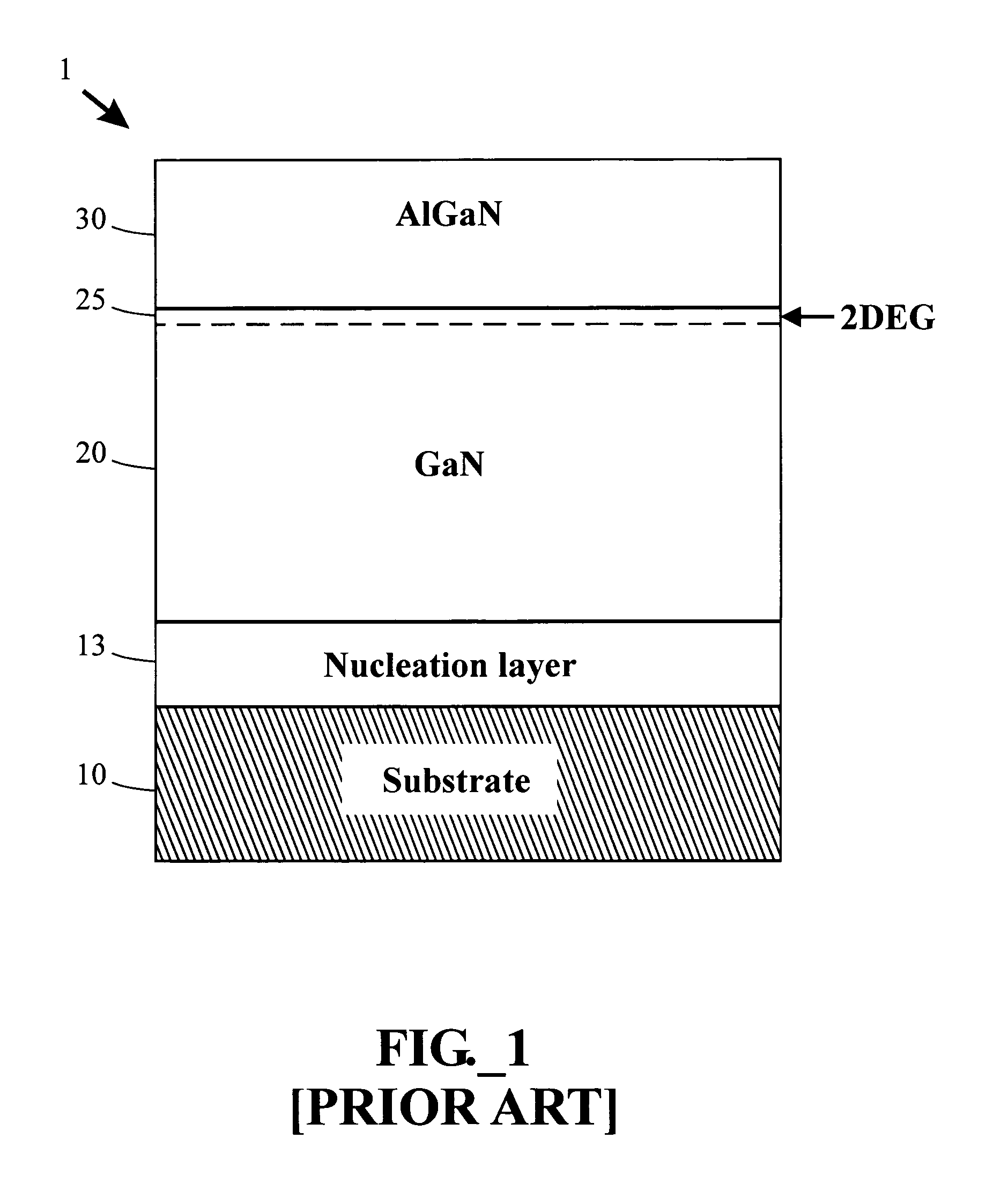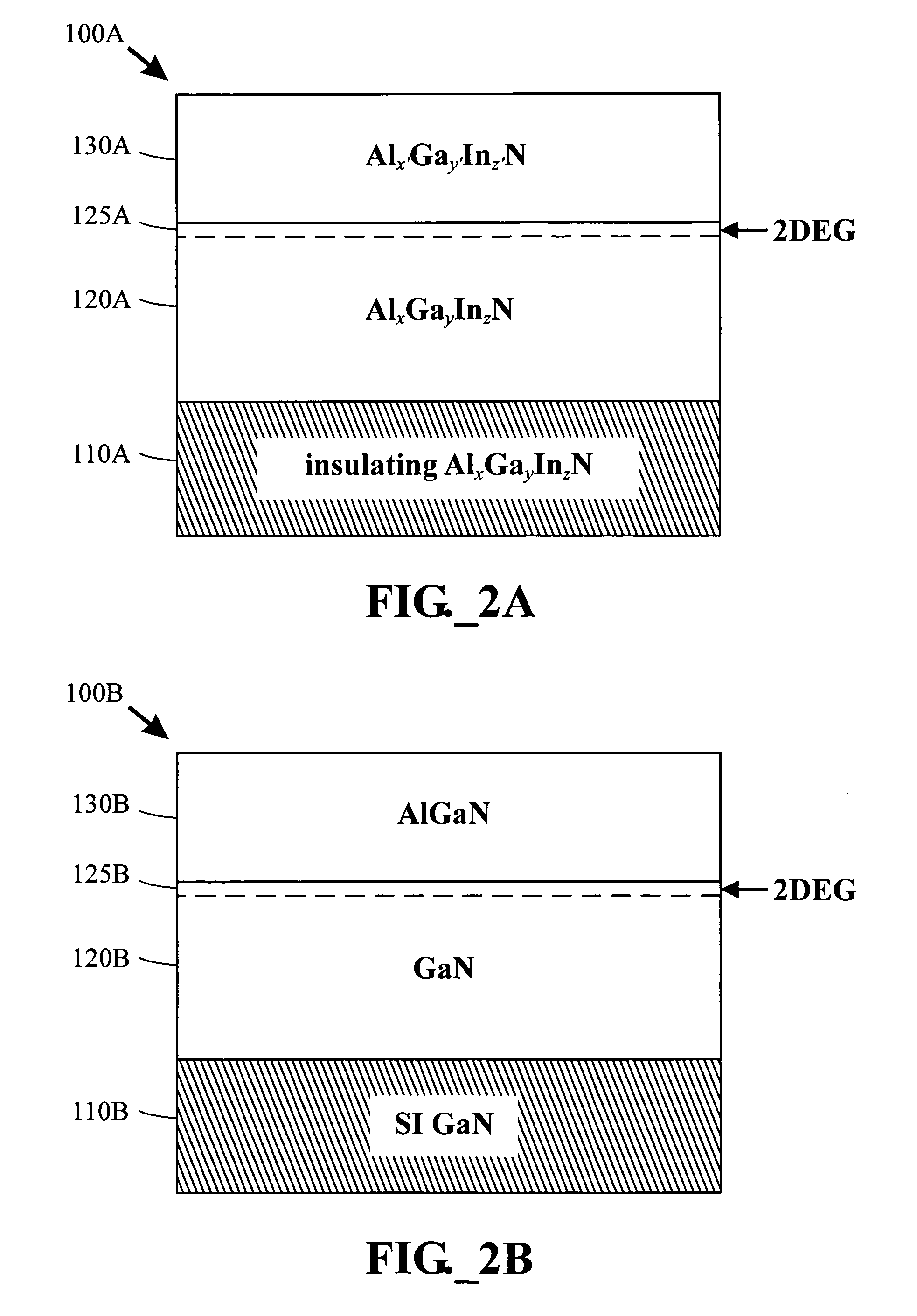High electron mobility electronic device structures comprising native substrates and methods for making the same
- Summary
- Abstract
- Description
- Claims
- Application Information
AI Technical Summary
Benefits of technology
Problems solved by technology
Method used
Image
Examples
example 1
[0064] A first III-nitride multi-layer device structure of the type shown schematically in FIGS. 2A-2B was constructed with a c-plane SI GaN substrate. The structure was grown by MOCVD using ammonia as the nitrogen source and TMG (trimethylgallium) and TMA (trimethylaluminum) as the gallium and aluminum sources, respectively. A cleaned, c-plane SI GaN substrate was loaded into a reactor and heated to the growth temperature. Growth began once the reactor reached the growth temperature, without anneal or nucleation steps. A 100 nm thickness first GaN layer was grown on the substrate with the following process conditions: a susceptor temperature of 1220C (note that substrate temperature is typically about 50-200C lower than the susceptor temperature), a growth pressure of 100 mbar, and a growth rate of about 2 μm / hr. The aluminum source was then turned on and a 10 nm thickness second AlGaN layer was grown on the first layer with the percentage of Al in the second layer being about 24% ...
example 2
[0065] A second III-nitride multi-layer device structure of the type shown schematically in FIGS. 2A-2B was constructed with a vicinal SI GaN substrate. The structure was grown by MOCVD using ammonia as the nitrogen source, TMG as the gallium source, and TMA as the aluminum source. A cleaned, vicinal SI GaN substrate was loaded into a reactor and heated to the growth temperature. The vicinal substrate was offcut by 1 degree toward the direction. Growth began once the reactor reached the growth temperature, without anneal or nucleation steps. A 50 nm thickness first GaN layer was grown on the substrate with the following process conditions: a susceptor temperature of 1170C, a growth pressure of 100 mbar, and a growth rate of about 2 μm / hr. The aluminum source was then turned on and a 10 nm thickness second AlGaN layer was grown on the first layer with the percentage of Al in the second layer being about 24% of the metal in the nitride allow. The aluminum and gallium sources were the...
example 3
[0066] A III-nitride multi-layer structure of the type shown schematically in FIG. 5 (i.e., including a GaN cap layer) was constructed. The structure was grown by MOCVD using ammonia as the nitrogen source, TMG as the gallium source, and TMA as the aluminum source. A cleaned, c-plane SI GaN substrate was loaded into a reactor and heated to the growth temperature. Growth began once the reactor reached the growth temperature, without anneal or nucleation steps. The growth conditions for all layers were: a susceptor temperature of 1170C, a growth pressure of 100 mbar, and a growth rate of about 2 μm / hr. The initial growth was that of a 100 nm thickness first GaN layer on the substrate. The aluminum source was then turned on and a 22 nm thickness second AlGaN layer was grown on the first layer, with the percentage of Al in the second layer being about 27% of the metal in the nitride alloy. The aluminum source was then turned off, and a 2 nm thickness third GaN cap layer was grown on the...
PUM
 Login to View More
Login to View More Abstract
Description
Claims
Application Information
 Login to View More
Login to View More - R&D
- Intellectual Property
- Life Sciences
- Materials
- Tech Scout
- Unparalleled Data Quality
- Higher Quality Content
- 60% Fewer Hallucinations
Browse by: Latest US Patents, China's latest patents, Technical Efficacy Thesaurus, Application Domain, Technology Topic, Popular Technical Reports.
© 2025 PatSnap. All rights reserved.Legal|Privacy policy|Modern Slavery Act Transparency Statement|Sitemap|About US| Contact US: help@patsnap.com



